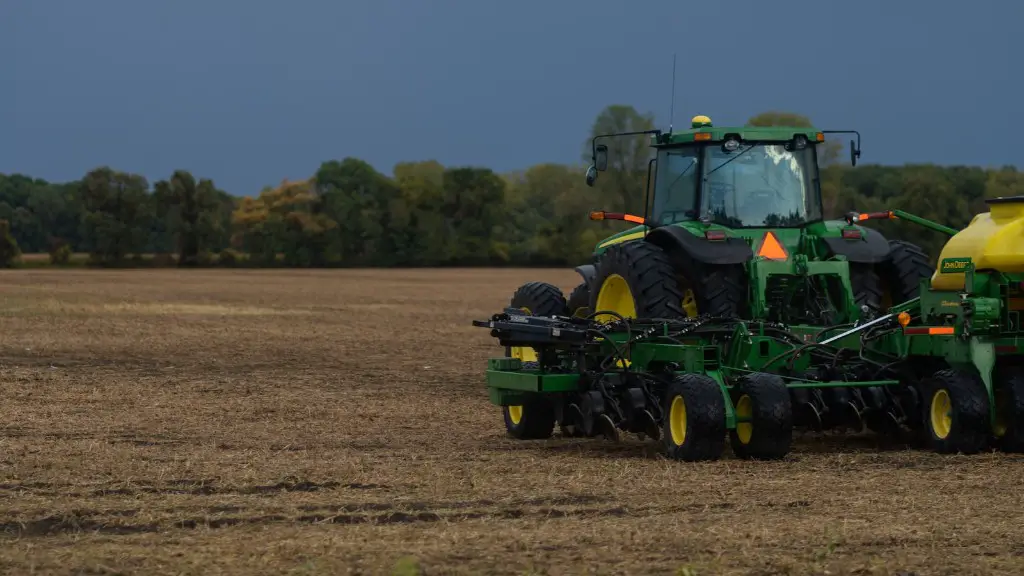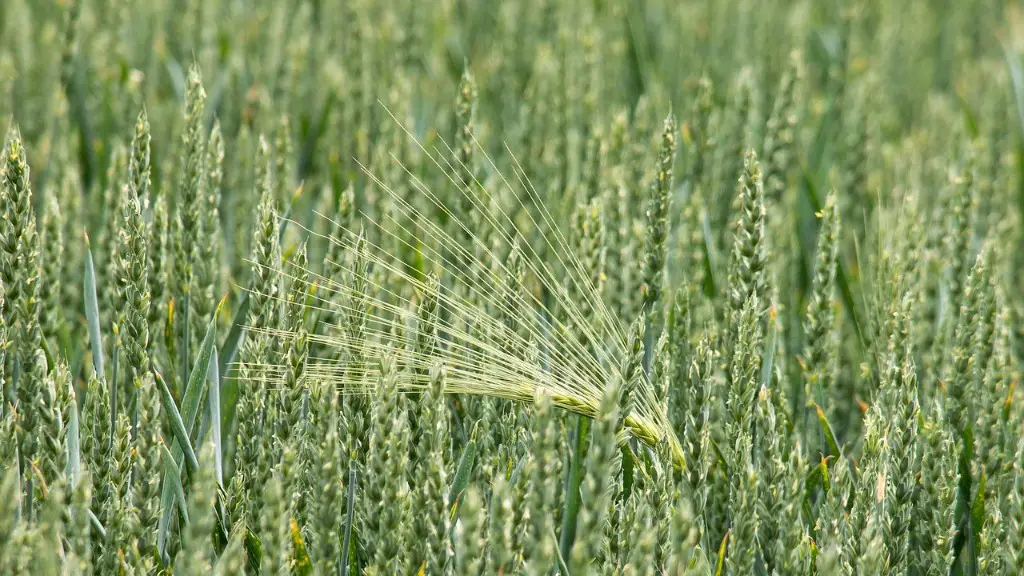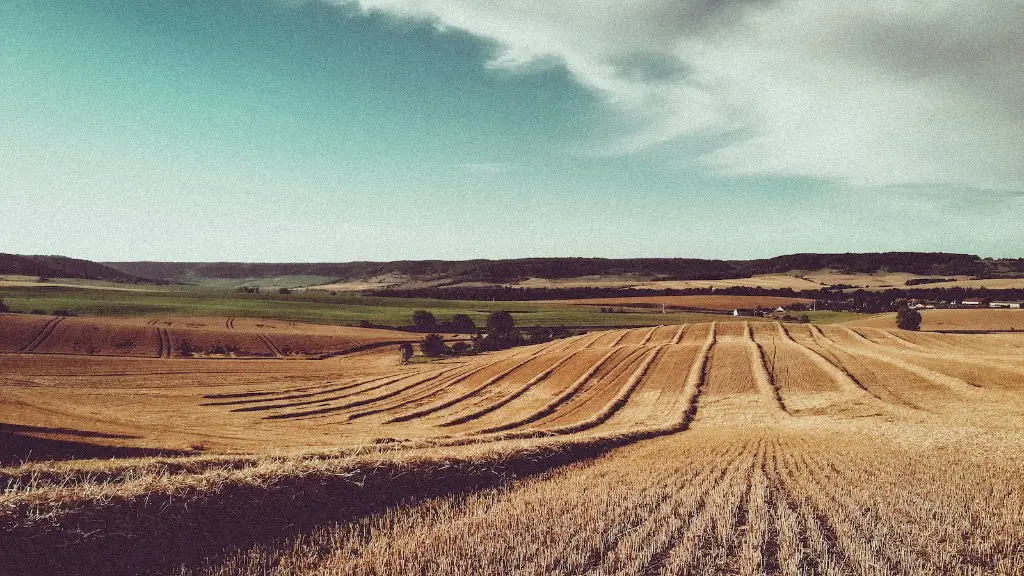In the past, farmers would save seeds from their best plants to plant the following season. However, with the advent of plant breeding, farmers now have the ability to select for specific traits in their plants, which has led to a drastic increase in crop yields. For example, plant breeders have developed varieties of wheat that are resistant to disease, which has helped to decrease the amount of wheat lost to disease each year. In addition, plant breeding has also resulted in the development of plants that are more resistant to drought and pests, which has further increased crop yields. Consequently, the importance of plant breeding in agriculture cannot be understated.
Plant breeding is a critical tool for farmers and agriculture as a whole. It helps to produce new and improved varieties of plants that are better suited to specific growing conditions and that have improved characteristics, such as higher yields, disease resistance, and pest resistance. Plant breeding also helps to ensure a more stable and secure food supply by diversifying the genetic pool of crops and making them less susceptible to disease and pests.
What is the importance in plant breeding?
Plant breeding can help promote global food security by improving the resilience of crops to extreme weather conditions. For example, many staple crops have been bred to better withstand drought or heat waves. This can help ensure that food production is not disrupted by extreme weather events, which are likely to become more frequent with climate change.
Hybridization is the most frequently employed plant breeding technique as it is an effective way to bring together desired traits from different plant lines into one plant line. This is done by cross-pollinating the plants to create a new plant line that has the desired characteristics of both parent plants. Hybridization can be used to create plants that are more resistant to disease, have higher yields, or have other desirable traits.
What are the four main goals of plant breeding
Plant breeding is a process used to develop new plant varieties that have desired characteristics. The major objectives of plant breeding are to increase the crop yield, raise plants with desired characteristics, develop a disease-resistant crop, and develop plants that can tolerate extreme environmental stress.
Crop breeding is the art and science of improving important agricultural plants for the benefit of humankind. Crop breeders work to make our food, fiber, forage, and industrial crops more productive and nutritious. Crops provide for an expanding global population with increasing dietary expectations.
Crop breeding has played a vital role in increasing agricultural productivity and improving the quality of our food and fiber crops. Through crop breeding, we have been able to develop new varieties of crops that are more resistant to pests and diseases, and that can better tolerate environmental stresses such as drought and heat. We have also been able to develop crops with higher yields and improved nutritional content.
As the world’s population continues to grow, and as our diets become increasingly diverse, crop breeding will become even more important in ensuring that we have enough food to meet our needs. With the help of crop breeders, we can continue to improve the quality and quantity of the food we produce, and make a positive impact on the lives of people around the world.
Why it is important for agriculture graduates to study plant breeding?
Plant breeding is a process of improving the characteristics of plants in order to make them more beneficial to humans. Its objectives are to improve yield, quality, disease resistance, drought and frost resistance and other desirable characteristics of the crop. Plant breeding has been crucial in increasing agricultural production.
Plant breeding has been responsible for a significant increase in crop productivity over the last century. However, other factors such as better crop management (e.g. fertilization, irrigation, weeding) have also contributed to this increase.
What are the three main areas of plant breeding?
There are three main eras of plant breeding: selection of observed variants, generation and selection of expanded variation, and monitoring the inheritance of within-genome variation.
In the first era, plant breeders selected for variants that they observed in the field, without regard for their origin. This era was marked by the development of many new plant varieties, such as the dwarf wheat varieties that were developed in the 1930s.
In the second era, plant breeders began to control the mating of plants in order to create new variation. This led to the development of hybridization techniques and the creation of many new plant varieties, such as hybrid corn.
In the third era, plant breeders began to monitor the inheritance of within-genome variation and select for desired traits. This has led to the development of genomic-selection techniques and the identification of many new plant varieties with desirable traits.
Genetic resources are the fundamental basis for plant breeding and crop improvement. They provide the genetic diversity that allows us to select and develop plants with desirable characteristics, such as resistance to pests and diseases, tolerance to environmental stress, and improved yields. With a more limited genetic pool, it would be difficult, if not impossible, to produce the food that we rely on today.
What are the advantages of breeding
Selective breeding is the process of choosing certain individuals with desirable traits to mate in order to produce offspring with those same traits. This process can be used on both plants and animals, and has a number of advantages.
First, anyone can do it. There is no need for expensive equipment or training – all you need is a group of plants or animals and some knowledge of the traits you want to encourage.
Second, selective breeding can produce significant improvements to the plants or animals involved. This can be anything from increasing yield or disease resistance to creating a new variety with a desirable flavor or color.
Third, by carefully selecting which traits to breed for, it is possible to create entirely new plant and animal varieties. These may be created for aesthetic reasons, or to suit a particular climate or environment.
Fourth, selective breeding provides many of the same benefits as genetic engineering (GMO) work, but without the potential risks. This is because the changes produced by selective breeding are limited to those that can occur naturally, whereas genetic engineering can introduce completely new and potentially unstable genes.
Finally, the improvements brought about by selective breeding are passed down to future generations, ensuring that the benefits are long-lasting.
New germplasm, knowledge, and breeding techniques are required to breed the next generation of crop varieties. Plant breeding is the science and art of developing elite crop cultivars by creating and reassembling desirable inherited traits for human benefit. With the ever-changing environment and climate, new challenges are constantly emerging that require new solutions. To meet these challenges, plant breeders must continue to develop new crop varieties that are better adapted to their environment and that possess the desired traits that consumers demand.
What are some examples of plant breeding?
Artificial selection is a process in which humans breed plants and animals for specific traits. Farmers may select variants of wild mustard with larger leaves, for example, and mate the plants with the largest leaves. Over many generations, this process of artificial selection can produce kale, which has enlarged leaves selected from wild mustard. Another example is millet, which was bred from a wild grass to be more tolerant of drought and heat.
Plant breeding is one of the most important branches of agriculture. It deals with the improvement of crops by increasing their yield, improving their quality, and making them more resistant to biotic and abiotic stresses. Plant breeding has made a great contribution to the efficiency of modern agriculture, and it will continue to do so in the future.
Why is breeding value important
Estimated breeding values are the best predictor of how an animal will breed, says Amari Bornman, animal scientist at Simmentaler SA. Animal breeding is based on selection, which is based on genetics. Breeding values are an estimate of the genetic merit of an animal for a particular trait. The higher the breeding value, the greater the likelihood that the animal will transmit that trait to its offspring.
Plant breeding is the process of manipulating plant species to create desired genotypes and phenotypes for specific purposes. It is an ancient practice that has been used for millennia to improve the yield, quality, and hardiness of crops. The modern science of plant breeding began in the early 1900s with the work of Gregor Mendel, who defined the basic principles of inheritance. Since then, plant breeders have used Mendelian genetics, as well as newer techniques, to develop improved varieties of crops.
What are the advantages of breeding in crop production?
Biodiversity is essential to the health of our planet and its ecosystems. Unfortunately, human activity has led to a dramatic decline in biodiversity over the past few hundred years.
Restoring biodiversity is essential to mitigating and reversing the damage that has been done. There are many ways to restore biodiversity, including:
-protecting and restoring natural habitats
-sustainable management of natural resources
-conservation of water and soil resources
-land preservation
Natural breeding allows animals to produce offspring without the assistance of humans. This process requires minimal effort from the breeders and does not involve the use of scientific techniques to mate the animals. Additionally, natural breeding does not require a heavy investment in laboratories, equipments or expert personnel.
Is plant breeding a crop improvement in agriculture
These breeding techniques have been used to develop higher-yielding varieties, including plants resistant to pests or disease. These improved varieties have contributed to a dramatic explosion in agricultural output. This increase in output is essential to feeding the ever-growing population of the world.
There are many plant breeding methods that can be used to develop new cultivars. However, the most common methods involve collection of variability, evaluation and selection of parents, hybridization, selection and testing of superior recombinants, testing, release and commercialization of new cultivars.
Collection of variability is the first step in any plant breeding program. This step involves collecting plant material from a wide range of sources. This material is then evaluated for its agronomic, horticultural and/or other traits of interest.
Once the variability has been collected, the next step is to evaluate and select the parents for hybridization. This is usually done by looking at the overall performance of the plants in terms of their desired traits.
After the parents have been selected, the next step is to hybridize them. This is done by cross-pollinating the plants to create new hybrids.
Once the hybrids have been created, the next step is to select and test the superior recombinants. This is usually done by growing the hybrids in different environments and selecting those that perform best in terms of the desired traits.
Once the superior recombinants have been selected, the next step is to test them. This is done by growing
Final Words
Plant breeding is the process of crossing two plants with desired characteristics in order to produce a third plant with those desired characteristics. This process is important in agriculture as it allows farmers to produce crops with specific traits that are beneficial for their farm. For example, plant breeding can be used to produce crops that are resistant to pests and diseases, that have a higher yield, or that are more tolerant to environmental stresses such as drought.
Plant breeding is a process of selecting plants with desired traits and then propagating them. This process is important in agriculture because it helps farmers to produce crops that are more resistant to disease, pests, and environmental stresses. Additionally, plant breeding can result in higher yields, and can produce plants with improved nutritional content.





